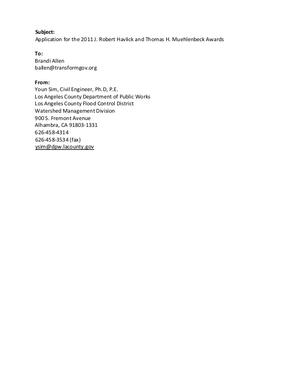
The LACFCD was established in 1915 under the Los Angeles County Flood Control Act. Its boundaries encompass approximately 2,752 square miles. The LACFCD's mission is to construct, operate, and maintain an advanced system for flood protection and water conservation, while improving water quality and maximizing habitat, open space and recreational opportunities.
The LACFCD operates and maintains 15 major flood control dams and reservoirs, 487 miles of open channels, 79,957 catch basins, 2,919 miles of underground storm drain conduits, 62 pump plants, 155 sediment entrapment basins, 234 crib dams, 27 sediment placement sites, 27 spreading grounds, 24 low-flow diversion structures, and 3 seawater intrusion barriers. The LACFCD's major programs are categorized as flood control, water conservation, and urban runoff and stormwater quality.
Urban stormwater runoff has been identified as a major cause of degradation of rivers and streams with metals, organic chemicals, and pathogens. The LACFCD is dedicated to improving the surface water quality by identifying and characterizing pollutant sources via effective stormwater monitoring and management. Efforts have been expanded to active public education about stormwater pollution sources, impacts, and methods of prevention. In addition, through cooperation with stakeholders, the LACFCD has developed projects for storm and urban runoff water quality enhancement. These projects often include flood control, water conservation, recreation, habitat protection, and open space benefits.
